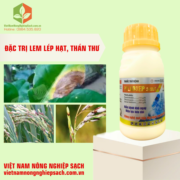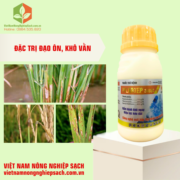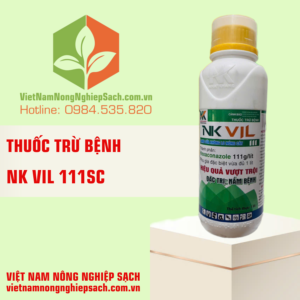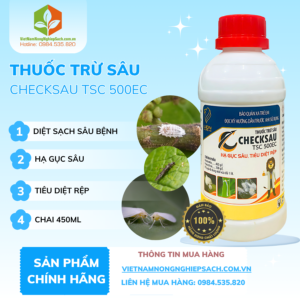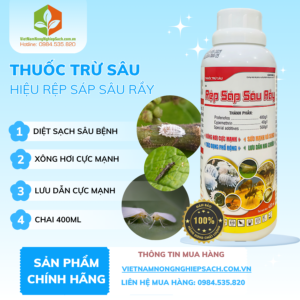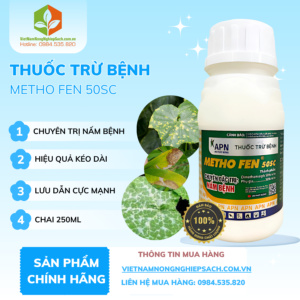Description
PILARTEP 345SC
CHUYÊN TRỊ BỆNH THÁN THƯ, SƯƠNG MAI, RỈ SẮT, PHẤN TRẮNG, THỐI NHŨN, ĐỐM LÁ, ĐỐM RONG

THÀNH PHẦN PILARTEP 345SC
- Pyraclostrobin 115g/l
- Tebuconazone 230g/l
- Phụ gia đặc biệt đủ 1 lít
CÔNG DỤNG PILARTEP 345SC
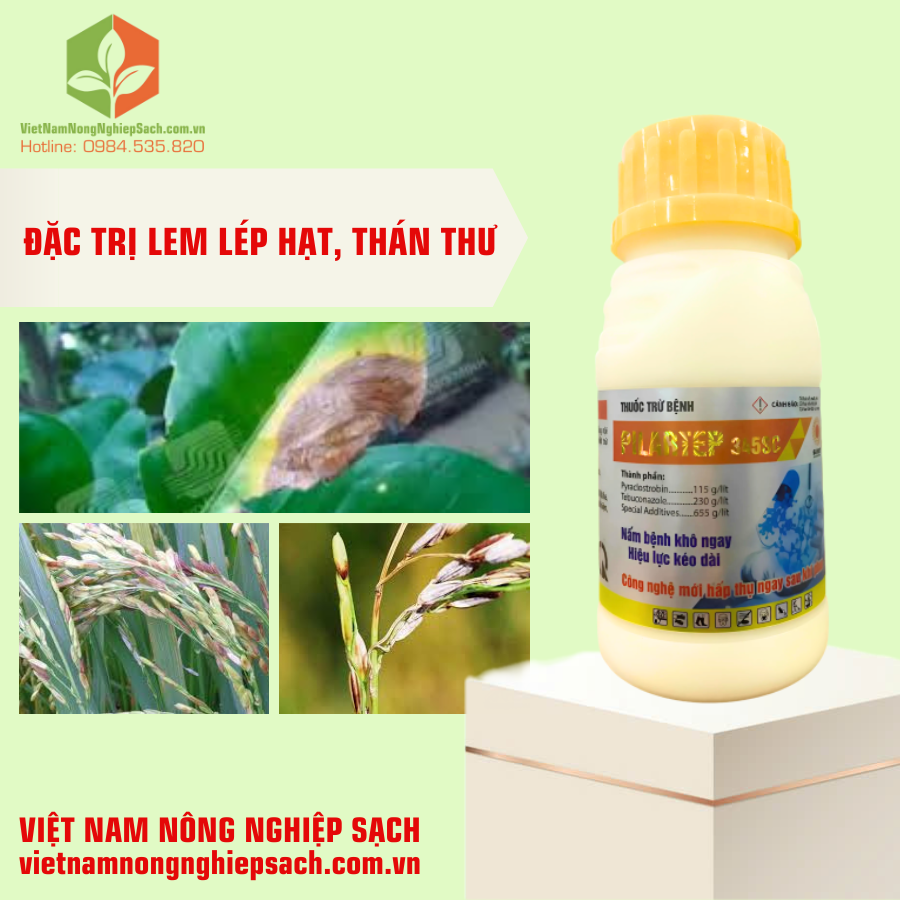
- PILARTEP 345SC là thuốc trừ bệnh có tác dụng nội hấp mạnh và hoạt chất tiên tiến nhất hiện nay giúp diệt trừ nhanh và hiệu quả nấm bệnh trên cây trồng.
- Hoạt chất Pyraclostrobin và Tebuconazone được một số công ty đăng kí trừ: Đạo ôn (Đạo ôn lá, đạo ôn cổ bông), lem lét hạt, khô vằn trên lúa.
- Phun lần 1: Khi bệnh chớm xuất hiện hoặc khi lúc có tim đèn
- Lần 2: Khi lúc trỗ lẹt xẹt
- Phun lần 3: khi lúa trỗ đều
HƯỚNG DẪN SỬ DỤNG PILARTEP 345SC
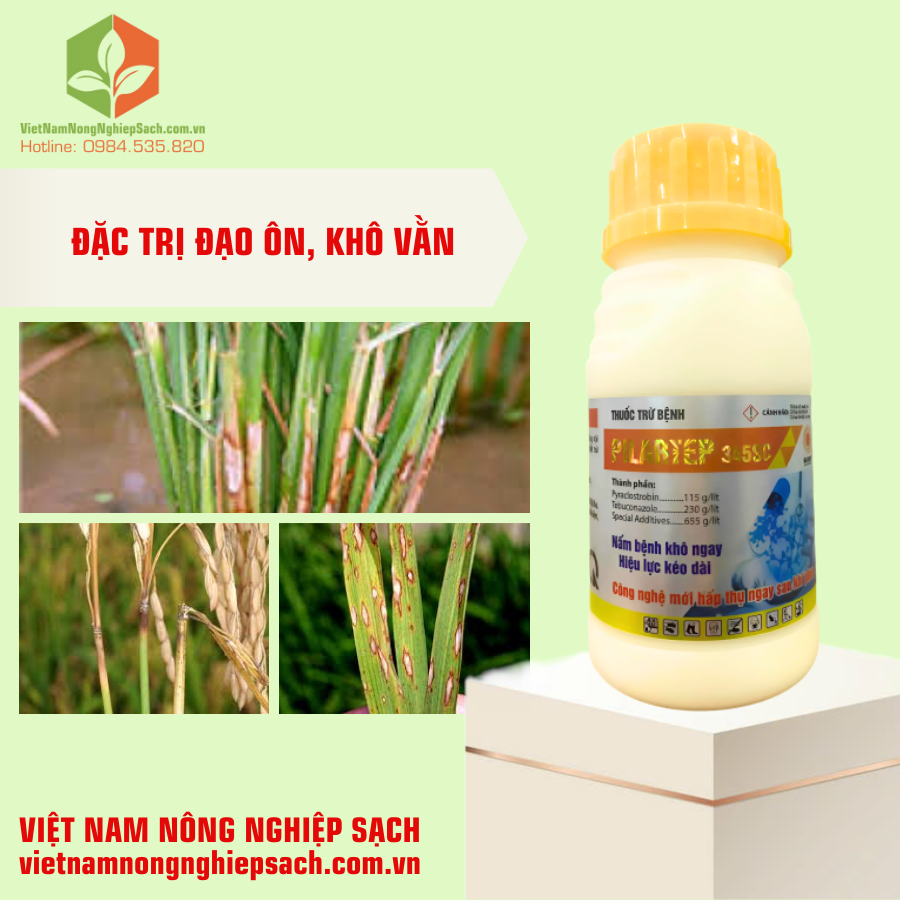
- Pha 30 – 50ml thuốc cho bình 25 lít. Phun 2 – 3 bình cho công 1000m2
- Liều lượng nước phun: 600ml/ha. Lượng nước phun 400 -600 lít/ha
- Thời điểm phun: Phun khi tỷ lệ bệnh mới xuất hiện, tỷ lệ bệnh khoản 5% – 7%.
- Thời gian cách ly không xác định.
#PILARTEP345SC #THÁNTHƯ #SƯƠNGMAI #RỈSẮT #PHẤNTRẮNG
KIẾN THỨC NHÀ NÔNG CẦN BIẾT
TEBUCONAZONE LÀ GÌ ?
- Tebuconazole là một hoạt chất thuộc nhóm triazole, được sử dụng làm thuốc trừ nấm phổ rộng trong nông nghiệp. Nó có tác dụng ngăn chặn sự phát triển của nấm bệnh bằng cách ức chế quá trình tổng hợp ergosterol, một thành phần quan trọng của màng tế bào nấm.
- Tebuconazole được dùng để phòng và trị nhiều loại bệnh hại cây trồng như phấn trắng, gỉ sắt, thán thư, đốm lá và lem lép hạt. Ngoài ra, nó còn giúp tăng cường sức đề kháng của cây, hỗ trợ cây phát triển khỏe mạnh và nâng cao năng suất.
⇒ SẢN PHẨM TƯƠNG TỰ THAM KHẢO THÊM
ANVIL MỸ – THUỐC TRỪ BỆNH ĐẶC TRỊ KHÔ VẰN, LEM LÉP HẠT

THÀNH PHẦN ANVIL MỸ
Hexaconazole………50g/lít
CÔNG DỤNG ANVIL MỸ
ANVIL MỸ là thuốc trừ bệnh cao cấp có tính nội hấp, lưu dẫn mạnh. Phòng trừ nhiều loại bệnh hại cây trồng.
Đặc trị: Khô vằn, lem lép hạt trên lúa; thán thư trên điều; phấn trắng cao su; rỉ sắt, khô cành trên cà phê, cao su.
CHÚC CÁC BẠN THÀNH CÔNG
——————————————————————————-
VIỆT NAM NÔNG NGHIỆP SẠCH
Thuốc bvtv _ hạt giống_ dụng cụ nông nghiệp
Hỗ Tư vấn kỹ thuật tại vườn
Liên hệ mua hàng : 0984.535.820
Địa chỉ cửa hàng : Ngã Tư khu công nghiệp Tân Phú , Khu 7 – Thị Trấn Tân Phú – Tỉnh Đồng Nai
Link web: vietnamnongnghiepsach.com.vn
Link youtube 1: https://www.youtube.com/c/TrịBệnhChoCâyTrồng
Link youtube 2: https://www.youtube.com/c/KiếnThứcNôngNghiệp

